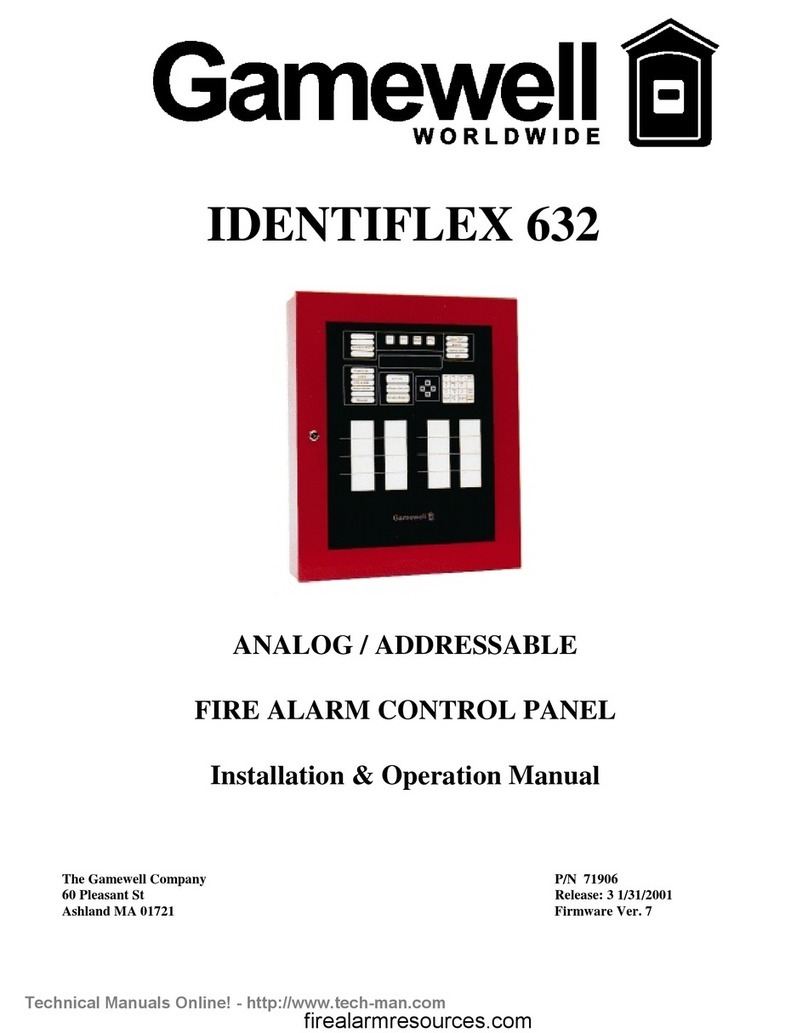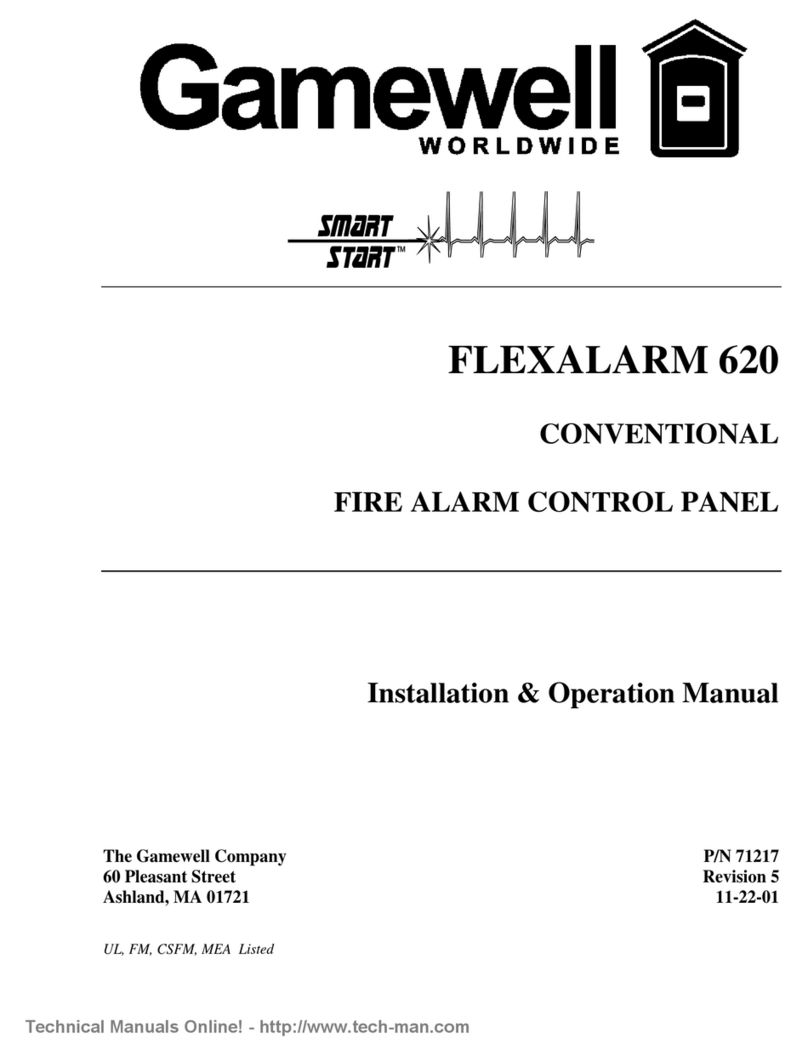
Page 4 of 35
1.0 INTRODUCTION
The Gamewell Flex 4 Fire Alarm Control Panel provides four supervised Class B (Style B) Initiating Circuits, or
twosupervisedClassA(StyleD)InitiatingCircuits,andtwosupervisedClassAorB(StyleZorY)IndicatingCircuits.
The Gamewell Flex 8 Fire Alarm Control Panel provides eight supervised Class B (Style B) Initiating Circuits, or
four supervised Class A (Style D) Initiating Circuits, and four supervised Class A or B (Style Z or Y) Indicating
Circuits. All Circuits are supervised for opens and ground faults, and Indicating Circuits also for shorts.
Available options include; aCircuit Expander Module (CEM)to increase the Flex 4to a Flex 8,a Digital Alarm
Communicator Module (DACT)or a Polarity Reversal / City Tie Module (PRM), and two auxiliary relay modules,
Model RY4 and Model RY8 that provide four or eight configurable Form C dry contacts respectively.
1.1 Overall Features:
TThe Flex 4 has 4 Class B (Style B) Initiating Circuits which may be configured as 2 Class
A(Style D) Circuits. The Flex 4 has 2 power limited Class A/B (Style Z/Y) Indicating
Circuits with an individual trouble indicators for each circuit. A CEM,Circuit Expander
Module can be easily field installed to increase the circuit capacity of a Flex 4 to that of the
Flex 8.
TThe Flex 8 has 8 Class B (Style B) Initiating Circuits which may be configured as 4 Class A (Style D)
Circuits. The Flex 8 has 4 power limited Class A/B (Style Z/Y) Indicating Circuits with an individual trouble
indicators for each circuit.
TEach Initiating Circuit is configurable for Normal or Verified Alarm operation. On a Flex 4 configured for
Class B wiring performance (or on a Flex 8 configured for Class A), Initiating Circuit 3 may be configured
as a Waterflow Zone and Initiating Circuit 4 may be configured as a Latching or Non-Latching Supervisory
Zone.
On a Flex 8 (also Flex 4 with the optional CEM module installed) configured for Class B wiring operation,
Initiating Circuit 3 and/or Initiating Circuit 7 may be configured as a Waterflow Zone, and Initiating Circuit
4 and/or Initiating Circuit 8 may be a Latched or Non-Latched Supervisory Zone.
TIndicating Circuits may be configured as Audible or Visual and as silenceable or non-silenceable. Circuits
configured for audible devices may operate for Steady, Temporal Code, California Code, or March Time.
TIndividual Slide-Switch provided for disconnect of each initiating circuit.
TSignal Silence Inhibit (disabled or 1 minute) and Auto Signal Silence (disabled or 5, 10, 20 minutes)
TZone Annunciated Walk Test.
TSubsequent Alarm, Supervisory, and Trouble Operation.
TResettable Auxiliary Power Supply (200 mA Max.) For Four Wired Smoke Detectors
TAuxiliary contacts for Common Alarm and Supervisory (disconnectable), and Common Trouble relay.
TRS-485 Interface for up to 3 RA8 Multiplexed Remote Annunciators.
TRemote Trouble Indicator Interface for RTI
TAccepts an optional DACT (Dialler) or PRM (City Tie) module, and also one RY4 or RY8 Relay Module.
TEasy Configuration via DIP Switches.
TRugged,keylocked, redcabinetwith tencombinationknockouts, easilyremoveablepiano hingeddoorand
an integrated trim “ring” for surface or flush mounted installation. Uses Gamewell Key.
Technical Manuals Online! - http://www.tech-man.com































